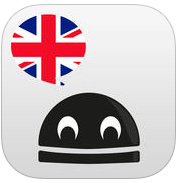These past few weeks I’ve been teaching a pre-sessional course at a UK university and have heavily experimented with using the instant messaging app WeChat in class. The predominant L1 is Mandarin, but with Thai and Arabic speakers too, it has been the perfect context for testing. The outcome has been surprisingly positive and a great learning curve for both the students and me.
Here are some activities I trialed:
Free chat WeChat
As a warmer at the beginning of class after a free study period and lunch break, I asked the students to chat about anything they liked. They chose food, the trip they went on at the weekend, and I spurred them on with questions. Admittedly the answers were very short, but it helped them feel comfortable with chatting open class and with the teacher.
Synonym race
This activity worked really well. I selected academic lexis the students had learnt during the course to date, and it was a novel and quick way to refresh the lexis and push the learners for more than one alternative way to say something. On other occasions I have made it a group activity where one phone in a group of four students is used, and a point is awarded for the first answer with an additional point if the synonym is spelt correctly.
Lecture summary and peer correction
I asked the students to consolidate their notes in groups of four, for a lecture they had attended that morning. The task was to compile a 100 word succinct summary of the lecture covering the main points. Once this was uploaded, the groups peer corrected the texts for content, language and grammar mistakes. Each text was read aloud open-class, and peers shouted stop at any point to correct the mistakes. The students enjoyed reading and correcting each other’s work.
Free writing assignment – out of class
I wanted to see if the quality of writing changed if the task was to be completed in students’ own time. I gave the students some questions to introduce them to the topic, then asked them to write a 100 word summary using information from their answers to help them. Some wrote as they would speak in chat style, but others continued to write in a clear and convincing academic style. When I asked the students how they felt about completing a writing task like this, they all agreed they enjoyed it because it gave them the freedom to manage their own time and complete the task when it was convenient for them.
If you try any of the activities above, I’d love to hear about it!









